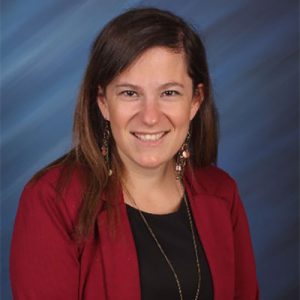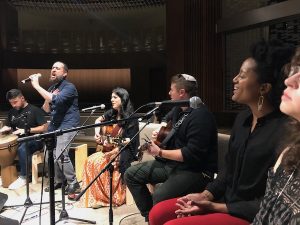Jewish Worship: Time for some Creative Disruption
Editor’s Note: This article appeared in eJewishPhilanthropy on October, 2025.
As a pulpit cantor and rabbi who has served a synagogue community for a dozen years, I rarely have an opportunity  to experience Shabbat services beyond my own sanctuary. This has been an unusually travel-heavy year for family simchas, and I had the pleasure of seeing three other synagogues in action: a Reform temple in Washington State; a Conservative synagogue in Arizona; and a Sephardic Temple close to our own congregation in Los Angeles. It’s both exciting and uncanny, interesting and unnerving, to watch a familiar script with different players and radical diversions from what I am accustomed to seeing. The melodies that I have never heard. The prayers that they skipped. The way they navigated the b’nei mitzvah ceremonies; the announcements; the kiddush.
to experience Shabbat services beyond my own sanctuary. This has been an unusually travel-heavy year for family simchas, and I had the pleasure of seeing three other synagogues in action: a Reform temple in Washington State; a Conservative synagogue in Arizona; and a Sephardic Temple close to our own congregation in Los Angeles. It’s both exciting and uncanny, interesting and unnerving, to watch a familiar script with different players and radical diversions from what I am accustomed to seeing. The melodies that I have never heard. The prayers that they skipped. The way they navigated the b’nei mitzvah ceremonies; the announcements; the kiddush.
 I returned to my community each time with a pocketful of ideas that I am eager to try. It is not that the way our community does Shabbat is broken; rather, it is because stagnancy breeds boredom. Jewish customs have a way of getting stuck. The longer we have been doing something a given way, the less likely we are to examine how ritually effective it is. We lean on the power of precedent–sometimes calling it “traditional”—rather than the power of disruption. We need disruption in our spiritual lives. We need to turn off the autopilot mode in services so as to reawaken our intentions and insert some fun in our prayer experiences.
I returned to my community each time with a pocketful of ideas that I am eager to try. It is not that the way our community does Shabbat is broken; rather, it is because stagnancy breeds boredom. Jewish customs have a way of getting stuck. The longer we have been doing something a given way, the less likely we are to examine how ritually effective it is. We lean on the power of precedent–sometimes calling it “traditional”—rather than the power of disruption. We need disruption in our spiritual lives. We need to turn off the autopilot mode in services so as to reawaken our intentions and insert some fun in our prayer experiences.
For the past eight years, my home synagogue, Temple Beth Am in Los Angeles, has hosted Kol Tefilla, a radically 
 heimish Shabbaton and conference focused on innovative tefillah experiences. Our team of Rabbis Adam Kligfeld and Rebecca Schatz, with the partnership of Cantor Michelle Stone, has brought this to life for years. We have been pleased to partner with United Synagogue of Conservative Judaism; the Clergy Leadership Incubator Rabbinical Fellowship Program (CLI); the Cantors Assembly; the Rabbinical Assembly; Hadar; the Jewish Studio Project, and other institutions to offer a weekend for clergy and lay leaders who want to disrupt their tefillah mindset. Against the backdrop of our traditional Conservative landscape, we have delved into new content, form, and melodies, all guided by the instruction of remarkable teachers from across Jewish genres.
heimish Shabbaton and conference focused on innovative tefillah experiences. Our team of Rabbis Adam Kligfeld and Rebecca Schatz, with the partnership of Cantor Michelle Stone, has brought this to life for years. We have been pleased to partner with United Synagogue of Conservative Judaism; the Clergy Leadership Incubator Rabbinical Fellowship Program (CLI); the Cantors Assembly; the Rabbinical Assembly; Hadar; the Jewish Studio Project, and other institutions to offer a weekend for clergy and lay leaders who want to disrupt their tefillah mindset. Against the backdrop of our traditional Conservative landscape, we have delved into new content, form, and melodies, all guided by the instruction of remarkable teachers from across Jewish genres.
Click here to continue reading.
Rabbi Cantor Hillary Chorny is the Cantor at Temple Beth Am in Los Angeles, California. Her forthcoming book, Minding the Ritual Gap explores ritual through the lens of design thinking.

